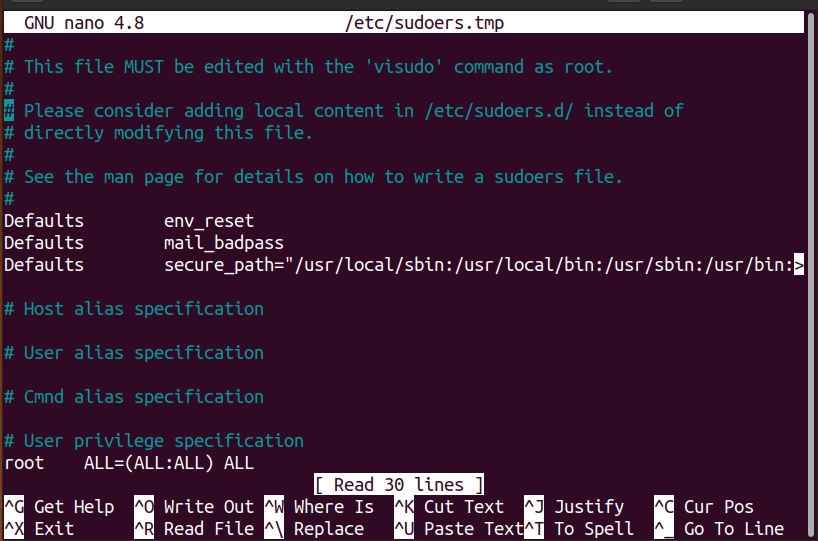

- RUN OPENVPN WITH SUDO WITHOUT PASSWORD HOW TO
- RUN OPENVPN WITH SUDO WITHOUT PASSWORD INSTALL
- RUN OPENVPN WITH SUDO WITHOUT PASSWORD PASSWORD
Now when you click on the system tray, you should see a new context menu labeled “VPN” – expand this and you should see the either “cecs” or “cecs_full_tunnel” (or both) depending on which configuration file you imported, along with a toggle. ovpn files if you’ve followed the instructions above). CA Certificate should be auto-populated with catca.pem, if it’s not, click the file browse icon and select this file in your file system (it should be in the same place as the. In the box that appears, select “Password” under Authentication Type, and enter your MCECS credentials for User name and Password. If you get an error saying that the configuration file can’t be imported, you may need to restart your system to load the new packages you’ve installed. You can repeat the process for the other file if you want to add both. Navigate to the directory where you’ve stored the cecs config files (~/cecs_linux_openvpn if you followed the instructions above exactly) and select either cecs.ovpn (split tunnel) or cecs_full_tunnel.ovpn (full tunnel). In the dialog that appears, click “Import from file…” Navigate to the Network tab and then click ‘+’ next to VPN (in 16.04, click ‘Add’): In 20.04, click on the system tray, and then click on the settings icon (In 16.04, click on the Network icon in the system tray and click Edit Settings): The remaining steps are slightly different between versions of Ubuntu.
RUN OPENVPN WITH SUDO WITHOUT PASSWORD INSTALL
Sudo apt-get install network-manager-openvpn network-manager-openvpn-gnome To install the packages, run this in a terminal window: However, you will need to install a couple of packages first.
RUN OPENVPN WITH SUDO WITHOUT PASSWORD HOW TO
How to start the OpenVPN client service on Ubuntu 15.If you’re using Ubuntu 16.04 or later, you can manage your VPN connection through the Network Settings GUI.How to start 2FA using OpenVPN with systemd.You should see several lines of output ending in Initialization Sequence Completed and your vpn should be running.

check its status like so sudo systemctl status The systemd service should now be running on the amsterdam vpn. Set it up for the nf file that we created earlier sudo systemctl start The %iis used as a wildcard so that this service can be used for multiple vpn configurations. The config that came with openvpn was broken so I removed it and created a new one based on this answerĬreate systemd service for openvpn sudo vim this config: ĭescription=OpenVPN Robust And Highly Flexible Tunneling Application On %IĮxecStart=/usr/sbin/openvpn -daemon -writepid /var/run/openvpn/%i.pid -cd /etc/openvpn/ -config %i.conf Also something I doubted about (clarifying for future readers): You need to run your script as sudo. Moving this file to a path in my home directory, instead of /usr/bin, I was finally able to call it with sudo without entering a password. Set up openvpn to run as a systemd service The script was chmodded +x (executable permisison), but it still didnt work.
RUN OPENVPN WITH SUDO WITHOUT PASSWORD PASSWORD
Openvpn should connect without asking for username or password Remove existing (broken) service config for openvpn sudo rm /etc/systemd/system//rvice Test your config! Start openvpn like this sudo openvpn -config /etc/openvpn/nf Look for a line that says auth-user-pass and replace it with the path to your credential file auth-user-pass /etc/openvpn/express-vpn-crednetials.txt Save the userename and then password each on their own line sudo vim /etc/openvpn/express-vpn-crednetials.txt Your VPN provider will provide you with a username and password for connecting over openvpn. conf sudo mv ~/Downloads/my_express_vpn_amsterdam_2.ovpn /etc/openvpn/nf Move that to /etc/openvpn/ and rename it to end in. These examples use expressvpn but most would work the same wayĭownload your vpn provider's ovpn config file e.g. This worked for me using Ubuntu 16.10 and openvpn 2.3.11 Setting up your vpn to run from bash I got a bit stuck on this and ended up writing out all of the instructions for setting it up with systemd manually.


 0 kommentar(er)
0 kommentar(er)
